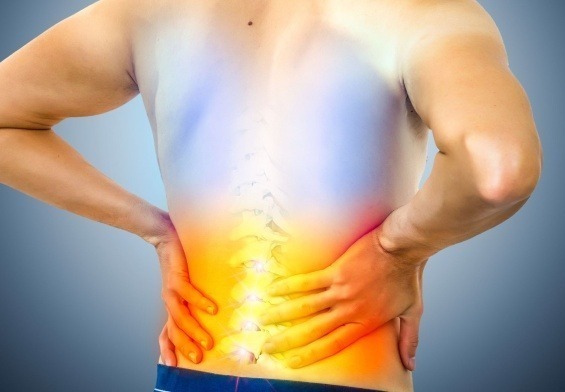Table of Contents
ToggleIntroduction to Common Causes of Back Pain
Back pain is a widespread condition that affects individuals of all ages and can significantly impact daily activities and quality of life. Often, this discomfort stems from various causes, ranging from acute injuries to chronic conditions. Strained muscles, past injuries, herniated discs, and lifestyle factors like obesity and poor posture are common culprits of back pain. Additionally, natural age-related changes such as osteoporosis can weaken bones and contribute to discomfort, making understanding these causes crucial for effective management and prevention.
Determining the specific cause of back pain can be challenging due to its complex nature. However, understanding the typical sources and mechanisms of back pain is the first step towards finding effective treatment and relief. Whether it’s from long-term poor posture, the physical demands of pregnancy, or conditions like obesity that place extra stress on the back, each scenario requires tailored strategies to manage and alleviate pain effectively. This comprehensive approach helps ensure that individuals can return to their daily activities with improved comfort and less risk of recurrence.
When to Seek Medical Attention
Determining when to see a doctor for back pain is crucial. If you experience a sudden increase in the frequency or severity of pain, numbness, tingling, intense pain that doesn’t improve with rest, or pain resulting from an injury, it’s time to consult a professional. More serious symptoms that require immediate medical attention include difficulty urinating, unexplained weight loss, weakness, fever, or pain accompanied by other alarming signs like bowel or bladder control issues, which could indicate a more serious underlying condition.
Diagnostic Procedures Explained
When diagnosing back pain, doctors may employ several imaging techniques to get a clearer picture of the underlying issues. X-rays are standard for detecting bone-related problems such as arthritis, while MRI (Magnetic Resonance Imaging) scans provide detailed images of soft tissues including muscles, ligaments, and nerves, helping to identify herniated discs and nerve damage. CT (Computed Tomography) scans offer a more detailed view than traditional X-rays, useful for diagnosing bone disorders, tumors, or internal injuries. Myelograms, another diagnostic tool, involve injecting contrast dye to highlight areas around the spinal cord and nerves, aiding in the detection of spinal issues like stenosis or infections.
Non-Surgical Treatments for Back Pain
For many suffering from back pain, non-surgical treatment options can be effective in managing symptoms. Anti-inflammatory medications and narcotics can provide temporary relief. Physical therapy is highly beneficial, focusing on strengthening and flexibility exercises that improve back function. On days when pain is more severe, reducing physical activity and resting can help alleviate symptoms.
The Impact of Back Pain on Mental Health
Chronic back pain doesn’t just affect physical health; it can also have a profound impact on mental well-being. Persistent pain can lead to increased stress, anxiety, and depression, creating a cycle that exacerbates the perception of pain. Seeking therapy can be beneficial, as a mental health professional can help develop strategies to cope with the emotional and psychological impacts of chronic pain. Therapy can also provide tools for relaxation and anxiety management that are crucial for overall wellness.
When Surgery Might Be Necessary
Understanding when surgery might be required is important for those dealing with back pain. Conditions such as compressed spinal cords, severe disk degeneration, significant fractures, tumors, or infections may necessitate surgical intervention. Symptoms like pain radiating to the extremities, significant weakness, or loss of bladder or bowel control are indicators that surgery could be the best course of action.
Lifestyle Adjustments to Manage Back Pain
Lifestyle modifications can also play a significant role in managing and preventing back pain. Regular exercise, proper muscle stretching before physical activity, maintaining a healthy body weight, and avoiding prolonged periods of sitting or standing can all contribute to better back health. Additionally, practicing good posture and avoiding smoking are simple yet effective ways to help reduce the risk of developing back pain.
Final Thoughts
Back pain can be a complex and challenging condition, but with the right approaches—ranging from medical care to mental health support—you can manage your symptoms and lead a healthier, more active life. Remember, proactive management is your best defense against the complexities of back pain.
Conclusion: Empowering Yourself Against Back Pain
Understanding the underlying causes, appropriate treatments, and effective management strategies for back pain is crucial to gaining control over this debilitating condition. Knowledge is power when it comes to dealing with back pain, and educating yourself about the different diagnostic tools, such as MRIs and CT scans, as well as treatment options, including physical therapy and surgery, can significantly improve your approach to managing pain. It’s important to recognize when non-surgical methods can be applied and when it might be necessary to consider surgical options. Adopting lifestyle changes such as regular exercise, maintaining a healthy weight, and practicing good posture can also play a significant role in both preventing and managing back pain.
Beyond the physical aspects of back pain management, it’s equally important to address the psychological impacts, such as stress, anxiety, and depression, which are commonly associated with chronic pain. Engaging in therapy can provide not only emotional support but also practical strategies to cope with the mental health challenges that often accompany long-term back pain. Mental health professionals can assist in developing personalized coping mechanisms that enhance the ability to manage pain and improve overall well-being. By taking a holistic approach to back pain that includes both physical and mental health strategies, individuals can achieve a better quality of life and more effectively handle the challenges of back pain.




